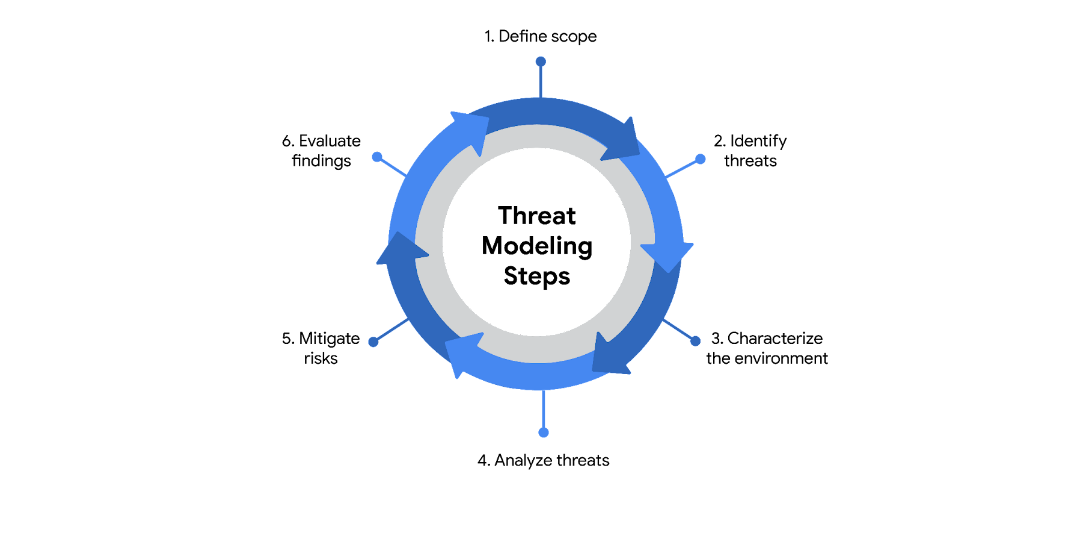Cybersecurity Skills: Day 24 of the 100-Day Learning Journey
 Mallika Gautam
Mallika GautamTraits of an effective threat model
Threat modeling is the process of identifying assets, their vulnerabilities, and how each is exposed to threats. It is a strategic approach that combines various security activities, such as vulnerability management, threat analysis, and incident response. Security teams commonly perform these exercises to ensure their systems are adequately protected. Another use of threat modeling is to proactively find ways of reducing risks to any system or business process.
Traditionally, threat modeling is associated with the field of application development. In this reading, you will learn about common threat modeling frameworks that are used to design software that can withstand attacks. You'll also learn about the growing need for application security and ways that you can participate.
Why application security matters Applications have become an essential part of many organizations' success. For example, web-based applications allow customers from anywhere in the world to connect with businesses, their partners, and other customers.
Mobile applications have also changed the way people access the digital world. Smartphones are often the main way that data is exchanged between users and a business. The volume of data being processed by applications makes securing them a key to reducing risk for everyone who’s connected.
For example, say an application uses Java-based logging libraries with the Log4Shell vulnerability ( CVE-2021-44228 ). If it's not patched, this vulnerability can allow remote code execution that an attacker can use to gain full access to your system from anywhere in the world. If exploited, a critical vulnerability like this can impact millions of devices.
Defending the application layer Defending the application layer requires proper testing to uncover weaknesses that can lead to risk. Threat modeling is one of the primary ways to ensure that an application meets security requirements. A DevSecOps team, which stands for development, security, and operations, usually performs these analyses.
A typical threat modeling process is performed in a cycle:

Define the scope
Identify threats
Characterize the environment
Analyze threats
Mitigate risks
Evaluate findings
The six steps of a threat modeling exercise shown as a cycle. Ideally, threat modeling should be performed before, during, and after an application is developed. However, conducting a thorough software analysis takes time and resources. Everything from the application's architecture to its business purposes should be evaluated. As a result, a number of threat-modeling frameworks have been developed over the years to make the process smoother.
Note: Threat modeling should be incorporated at every stage of the software development lifecycle, or SDLC.
Common frameworks When performing threat modeling, there are multiple methods that can be used, such as:
STRIDE
PASTA
Trike
VAST
Organizations might use any one of these to gather intelligence and make decisions to improve their security posture. Ultimately, the “right” model depends on the situation and the types of risks an application might face.
STRIDE
STRIDE is a threat-modeling framework developed by Microsoft. It’s commonly used to identify vulnerabilities in six specific attack vectors. The acronym represents each of these vectors: spoofing, tampering, repudiation, information disclosure, denial of service, and elevation of privilege.
PASTA
The Process of Attack Simulation and Threat Analysis (PASTA) is a risk-centric threat modeling process developed by two OWASP leaders and supported by a cybersecurity firm called VerSprite. Its main focus is to discover evidence of viable threats and represent this information as a model. PASTA's evidence-based design can be applied when threat modeling an application or the environment that supports that application. Its seven stage process consists of various activities that incorporate relevant security artifacts of the environment, like vulnerability assessment reports.
Trike
Trike is an open source methodology and tool that takes a security-centric approach to threat modeling. It's commonly used to focus on security permissions, application use cases, privilege models, and other elements that support a secure environment.
VAST
The Visual, Agile, and Simple Threat (VAST) Modeling framework is part of an automated threat-modeling platform called ThreatModeler®. Many security teams opt to use VAST as a way of automating and streamlining their threat modeling assessments.
Participating in threat modeling
Threat modeling is often performed by experienced security professionals, but it’s almost never done alone. This is especially true when it comes to securing applications. Programs are complex systems responsible for handling a lot of data and processing a variety of commands from users and other systems.
Conclusion
Effective threat modeling is a critical process for ensuring the security of applications and systems by identifying vulnerabilities and mitigating risks. Application security has become paramount due to the vast amount of data processed by web-based and mobile applications, making them prime targets for attacks. By following a systematic approach—defining the scope, identifying threats, characterizing the environment, analyzing threats, mitigating risks, and evaluating findings—organizations can proactively protect their assets. Several frameworks, such as STRIDE, PASTA, Trike, and VAST, provide structured methodologies for threat modeling, each tailored to different needs and environments. Collaboration among security professionals and integration throughout the software development lifecycle is essential for a comprehensive security posture.
Subscribe to my newsletter
Read articles from Mallika Gautam directly inside your inbox. Subscribe to the newsletter, and don't miss out.
Written by

Mallika Gautam
Mallika Gautam
designer & cyber security student :)